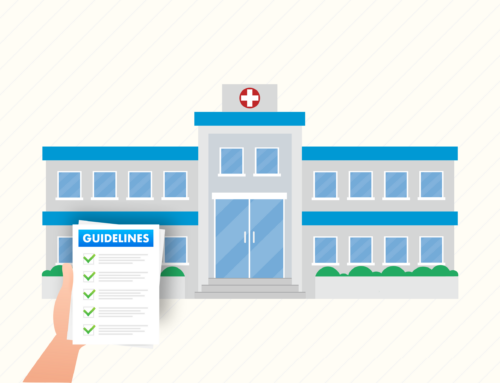For every 10 healthcare patients, there is 1 patient who experiences a harmful incident. These incidents could be because of unsafe care, an unsafe facility, or a gap in safety protocols that later cause avoidable incidents. This applies not only to your clients and patients but also to your employees. The healthcare industry is consistently fast-paced in both the administrative sense and the physical. Your culture of safety in healthcare is the extent to which your business goes to enhance the safety of your patients and clients.
Not prioritizing a culture of safety in your organization can increase the chances of noncompliance incidents, preventable patient harm, and a decline in patient support and care quality. These are only a few of the reasons that healthcare professionals have a stronger concern for how their business approaches safety compliance, patient care, and safety in general.
Keep reading to form a better understanding of how you can develop better resilience in healthcare environments and how to sustain those efforts.
What Is the Culture of Safety in Healthcare?
The culture of safety in healthcare is a depiction of your prioritization of patient care and safety. It combines a few key components to increase its success, such as:
- Standardizing safety practices
- Healthcare worker safety policies and monitoring
- Leadership and adherence
- Maintaining a safe environment for your workers
- Continued streamlined communication
The purpose of the culture of safety in healthcare is to have a process in place to identify things that have gone wrong while having a way to create a solution to solve and prevent what went wrong. One of the common misconceptions of this type of culture is that it’s designed to pinpoint “who” caused an incident to occur. However, prioritizing safety cultures is more of a proactive approach to safety incidents while pinpointing areas of concern and “what” is causing those concerns.
Why Is This Type of Culture Needed?
Safety incidents increase the chance of legal liabilities, reputation damage, loss of client or public trust, and financial losses. Aside from the things that become more preventable with safety prioritization, this type of culture is needed to help healthcare businesses increase employee and client retention, decrease the potential chance of injury, enhance safety compliance, and enhance the way safety incidents are observed and reported. Overall, the point is to streamline your organizational outcomes and to make positive safety outcomes continuous.
The Part That Occupational Safety and Health Administration (OSHA) Plays in Your ‘Safety Culture’
OSHA, as well as OSHA compliance in general, plays a vital part in the foundation of an organization’s safety culture. The entity holds businesses accountable for their part in healthcare hazards in the workplace and how they handle them. For compliance officers and other healthcare workers, it’s known that safety plan implementation, health management systems, and workplace assessments, along with safe handling protocols, are all just a few key focus areas of OSHA.
Given these areas of focus, most businesses are aware that safety adherence violations can range anywhere from $10,981 to $153,744. This is one of the primary reasons why developing a culture of safety isn’t only a primary concern of healthcare business owners but a continuous effort among healthcare workers, considering the consistent changes across the industry.
Primary Strategies to Sustain a Culture of Safety in Your Healthcare Organization
To develop and sustain a culture of safety within your organization, a few strategies can simplify the process:
- Implement safety reporting systems and compliance management tools.
- Form a leadership model to increase positive safety behavior among staff.
- Continuously invest in safety assets.
- Utilize compliance and safety training courses.
- Conduct safety audits on a regular basis.
Implementing a culture of safety within your organization doesn’t have to be complex with the right technology. The key to enhancing safety is to automate your efforts. This will allow you to be more proactive than reactive, which often results in the significant monetary losses that most business owners want to avoid.
Streamlining Your Safety Culture Through Compliance
To make safety in your workplace a priority, a good place to start would be to identify gaps in your safety plans and workflows. Outlining healthcare worker safety tips, policies, and reporting steps will protect your workplace and employees as well as the patients you work with.








